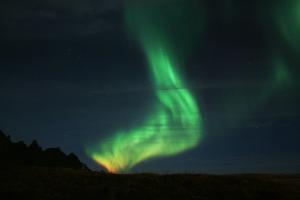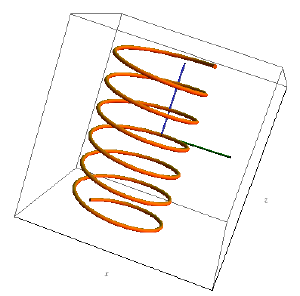Post
Aurora
21 May 2012
 M.Buschmann, via Wikimedia
M.Buschmann, via WikimediaI’ve been working through the intersteller medium section of the book recently. Most of it has focused on the detailed mathematics of how charges move in a magnetic field. This is important because charged particles make up a goodly portion of the interstellar medium in the form of plasmas, and their motion is therefore largely driven by interstellar magnetic fields and gravity.
One of the more interesting aspects of magnetic fields is that they don’t really affect the speed of a charged particle. Instead the magnetic field causes a charge to spiral along the magnetic field. For this reason magnetic fields tend to trap charges along their field lines. The charges generally stay trapped unless they collide with each other (not likely in interstellar space) or interact with something else, such as our atmosphere.
 Brian Koberlein
Brian KoberleinIt is this effect that causes the aurora we see in the polar regions of our planet. The solar wind given off by our sun consists of charged particles, and those particles get trapped by the sun’s magnetic field. As a result they spiral outward until they interact with Earth’s magnetic field. Most of the solar wind gets repelled by our magnetic field, but some of the charged particles get trapped by Earth’s field. Those particles then spiral along our field and are funneled to either the north or south magnetic pole. When these charges hit our upper atmosphere they can ionize oxygen and nitrogen atoms. Oxygen excitations tend to be greenish, while Nitrogen tends to be reddish, though you can get some other colors as well.
Of course describing all this mathematically takes a bit of computational vector calculus. You can see a basic plot of the motion of a charge above.